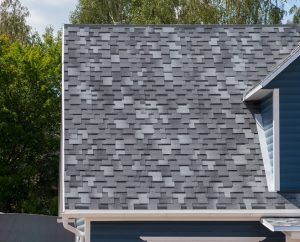Life Expectancy
Asphalt shingles are the most common roofing material in Florida and in the United States. They are divided into two categories: fiberglass asphalt and organic asphalt. The key similarity in both types is there use of asphalt to waterproof another material. Fiberglass asphalt shingles use a fiberglass base, and organic asphalt shingles use an organic (i.e. wood fiber, waste paper, cellulose) base. Both types have a top coat of slate, schist, quartz, vitrified brick, stone, or ceramic granules that block UV rays which can deteriorate the shingles. Asphalt shingles are the cheapest roofing material, so while it can be the perfect choice for those of us on a budget, we should know they have a correspondingly shorter life expectancy.
While asphalt shingles as a general category do have a shorter life expectancy than other roofing materials, it’s valuable to look at the two different types to see
their advantages and disadvantages. Organic shingles are more resistant to tearing and nail pull-though. They are also easier to install in cold weather with a lesser chance of blowing off. Unfortunately, organic shingles are more expensive, more prone to curling and blistering due to moisture and heat, and have a poor fire rating. They are most recommended for cold-weather installations. Fiberglass shingles are less expensive and less susceptible to cupping or curling, have a much better fire rating, and are lightweight. Unfortunately, they are less tear-resistant, more likely to blow off in cold weather, and have been reported for premature failures when low-end, lightweight products are used. Fiberglass shingles are most recommended for moderate and warm climates.
Organic and fiberglass shingles both have their comparative advantages and disadvantages, but they both share certain qualities that impact their life expectancy in Florida’s climate. Our high UV index degrades their protective granules much more quickly than in other climates, and they are also prone to warping (organic) or splitting (fiberglass) in extreme heat and weather changes. Our high levels of rain and humidity can promote algae growth—more cosmetic than dangerous in itself—but it can lead to mold and mildew that can rapidly deteriorate the shingles. Florida’s hurricanes and tropical storms also pose a serious threat because asphalt shingles are the least reliable roofing material against heavy winds. Even when you do not consider the threat of hurricanes, Florida’s environmental conditions can take a toll on asphalt shingles.
Asphalt shingles are warrantied between 20 to 50 years depending on quality and installation, but unfortunately, they are expected to last a much shorter time than that maximum, and in reality, they are believed to have a more probable life span of 12 to 15 years in Florida.
Of course, this does not mean that asphalt shingles should be avoided entirely. Instead, it is a warning that maintenance and upkeep on your roof will be a very important step to ensuring your roof lasts as long as its warranty. First, cleaning is an essential practice with asphalt shingles. You have to make sure that you keep mold and mildew at bay to preserve your shingles. Ask your roofer about asphalt shingles laced with copper that provide a defense against algae and mildew formation. You will also have to make sure that regular DIY roof inspections become a part of your routine. Those DIY inspections will also help you notice faulty shingles which you should be diligent about replacing so that the gaps do not compromise the rest of the shingles. You will also need to occasionally resurface your shingles to replace the UV fighting granules that you will lose more quickly in the Florida sun. Also, make sure to ask your roofer about reinforcing your shingles against high winds or about wind-resistant shingles when you are installing a new roof. If you follow these precautions and make inspecting and maintaining your roof a habit, low cost asphalt shingles may be the answer for you.


